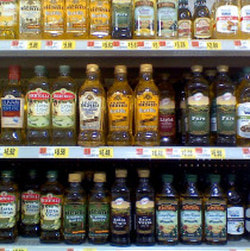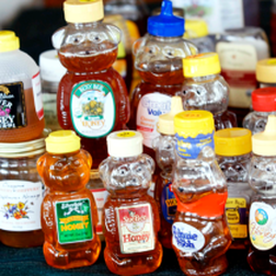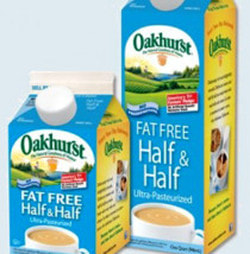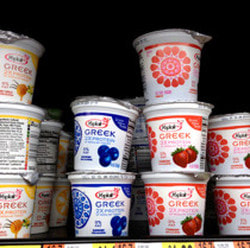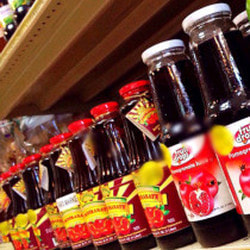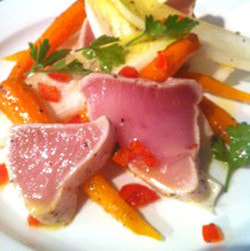Buyer Beware
Not all food are what they claim.
Grocery stores can be overwhelming. Warnings about harmful chemicals and additives compete with messages of amazing health benefits. Food trends come and go faster than we can incorporate them in our lives. What's the solution? Stick to the basics. Stay away from trends. Stay away from prices that seem to be too good to be true. And stay away from overly processed food. Every extra processing step a company takes with a product increases the cost and will usually require some kind of fix. Cheese, for example, is a basic food. Shredded cheese is processed food; it costs more per pound and has cellulose (usually corn starch) added to keep the cheese from clumping.
Buy local when possible and buy organic when feasible. Take the extra minute to read the label; if it has more than five ingredients, it's probably not real food. Below are a few of the more deceptive food products on the market today.
Buy local when possible and buy organic when feasible. Take the extra minute to read the label; if it has more than five ingredients, it's probably not real food. Below are a few of the more deceptive food products on the market today.
|
Extra-Virgin Olive Oils: About 70% of all extra-Virgin Olive Oil from Italy and Spain aren't what they seem. Extra-virgin olive oil is the first press from fresh olives, free of any impurities or inferior olives. To save time and money many producers have been diluting the pure oil with lower grades of olive oil, sunflower oil, canola oil or soybean oil. The oil is then fixed up with scents and food coloring to look and taste right. New standards are being put into place, though the impure oils are, in a lot of cases, still on the market shelves.
There really isn't a good way to know what you're buying. If there is locally produced olive oil available; that is your best bet. If the price seems too good to be true, odds are it's doctored. |
|
Honeys; about 80% of all honey sold in stores don't really qualify as honey. Look at the price; if it seems like a great deal, then it's probably fake. Some honeys have been diluted with corn syrup or other inexpensive sugar products. These are easy to spot, the sugar products will be listed in the ingredient section. Other honeys have been ultra-filtered and contain no pollen. A honey must contain pollen to be considered real honey. Honeys are ultra-filtered to eliminate any trace of its origin, usually China. By the time the product arrives in our stores as "pure honey" it has usually travel through several different countries and by doing so circumvented any requirement to list ingredients or origin. These honeys will often contain added sugar products, heavy metals, harmful antibiotics and other chemicals. Always buy honey from local sources, like farmer's markets or health food stores.
|
|
Low-fat and Nonfat Foods: Foods labeled low-fat or nonfat have rather long and incomprehensible lists of ingredients. The basics are this: any time fats are removed from a food, the texture and flavor has to be adjusted to make it a palatable product. Corn starches, whey, gelatins and emulsifiers are added to create a rich creamy texture. Food colorings and scents are added to give the appearance and feel of a regular product. Saving a few calories is not worth ingesting all those chemicals and additives. Eating the real thing in moderation is more satisfying anyway.
|
|
Low Cost Greek Yogurts: Greek yogurt is made by filtering regular yogurt a second time to remove more of the liquid. This makes the product thinker and more protein dense. Most store brands and Greek Style Yogurts save money by skipping the second filtering. They add cornstarch or gelatin to thicken it and dry milk powder to increase the protein content. In addition to this, commercial and store brand yogurts contain around 5 probiotics strains; enough to legally be considered a yogurt. Organic yogurts, on the other hand, contain anywhere from 15 to 25 strains.
|
|
Pomegranate Juices: Pure pomegranate juice is pressed exclusively from the fruits kernels. It takes a lot of kernels to extract a quart of juice, and the fruit is expensive. Many pomegranate juice brands will save money by diluting their product with grape or pear juice. Some will simply add sugar water. Always read the label.
|
|
Fish: About 1/3 of all fish sold is not what it claims to be. This mislabeling is more common in restaurants than in grocery stores. In some cases there are actually lists of names by which a fish can be sold. Rockfish can, for example, be sold as Pacific red snapper. In other cases the mislabeling is fraudulent; escolar, for example is often passed off as albacore tuna. Eating less fish is one solution. Buying sustainable fish from organic markets is another solution.
|
